Making a tallow sunscreen recipe at home is super easy and a great way to keep your skin healthy. Unlike store-bought sunscreens that can have lots of chemicals, tallow sunscreen is natural and gentle on your skin.
You just need a few simple ingredients and a little bit of time to mix it all. This DIY sunscreen recipe is not only better for your skin, but it’s also fun to make.
Jump to Recipe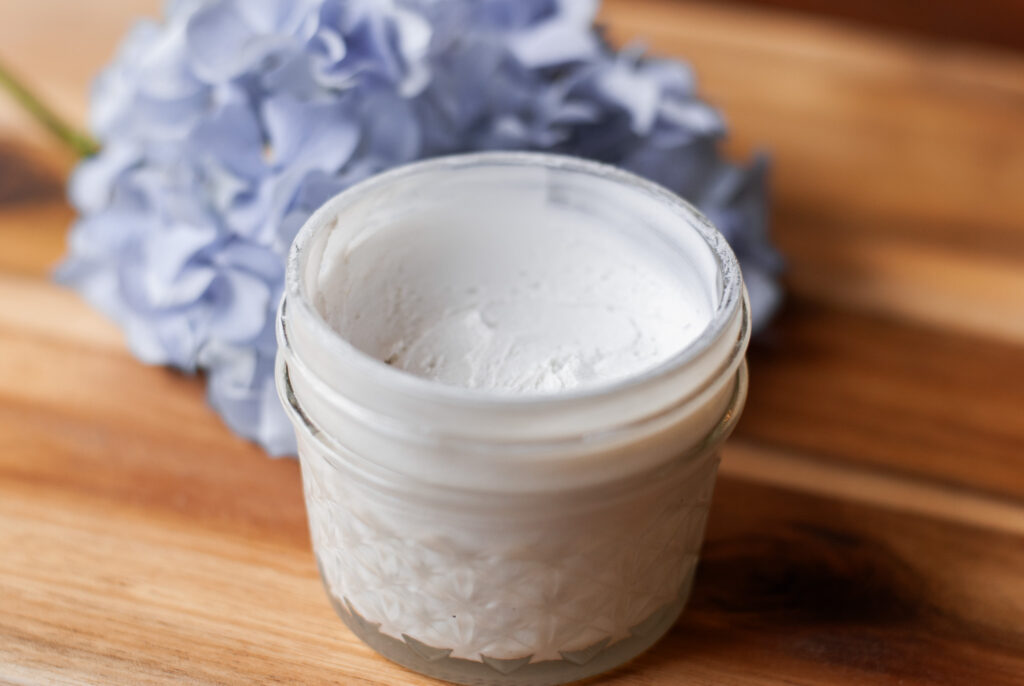
Skin Cancer and Sunscreen
The sun’s rays can be harmful to our skin. Spending too much time in the sun without protection will lead to sunburn, skin damage, and even skin cancers. The Skin Cancer Foundation suggests that 86% of melanoma can be attributed to harmful UV radiation.
Excess sun exposure will also speed up aging, making your skin look older faster.
Most people use conventional sunscreen to protect themselves, which usually have several active ingredients. These sunscreens work by blocking or absorbing the sun’s rays to prevent sun damage.
The problem is, that some of these ingredients can be harmful and might cause other health issues. That’s why many people look for natural alternatives to keep their skin safe. This tallow sunscreen recipe is easy to make using just a few ingredients.
Conventional Sunscreens
Commercial sunscreen will often contain a mix of chemicals and synthetic fragrances that can be harmful. These chemical sunscreens have active ingredients like oxybenzone and avobenzone, which help block the sun’s rays but can also be absorbed into the skin.
The Environmental Working Group (EWG) has done a lot of research showing that some of these harmful chemicals can mess with our hormones and even cause allergies.
Another issue is the synthetic fragrances in many sunscreens. Fragrance can cause skin irritation and allergic reactions. They can also contain harmful chemicals that may affect our health.
The EWG has found that many of these ingredients can be harmful not just to us but also to the environment, especially when they wash off in the ocean and harm marine life.
Because of these concerns, it’s important to know what’s in your sunscreen and think about safer, more natural options. This is why I like making homemade or natural sunscreens, which don’t have the harmful chemicals and synthetic fragrances found in many conventional products.
Mineral Sunscreens
Mineral sunscreens are a safer option compared to chemical sunscreens because they use natural ingredients to protect your skin. The main ingredients in mineral sunscreens are usually zinc oxide and titanium dioxide. These minerals sit on top of your skin and reflect the sun’s rays, giving you good SPF protection, which stands for sun protection factor. This means they can help prevent sunburn and skin damage.
One of the best things about mineral sunscreens is that they’re less likely to cause skin irritation and are safer for people with sensitive skin. However, it’s important to be aware that some commercial sunscreens, even if they’re labeled as mineral, might still contain toxic chemicals. Always check the label to make sure you’re getting a product that’s truly natural and free from harmful additives.
Using mineral sunscreens can give you peace of mind, knowing you’re protecting your skin in a healthier way. But remember, it’s still important to choose products wisely and look for those that are free from synthetic fragrances and other harmful ingredients.
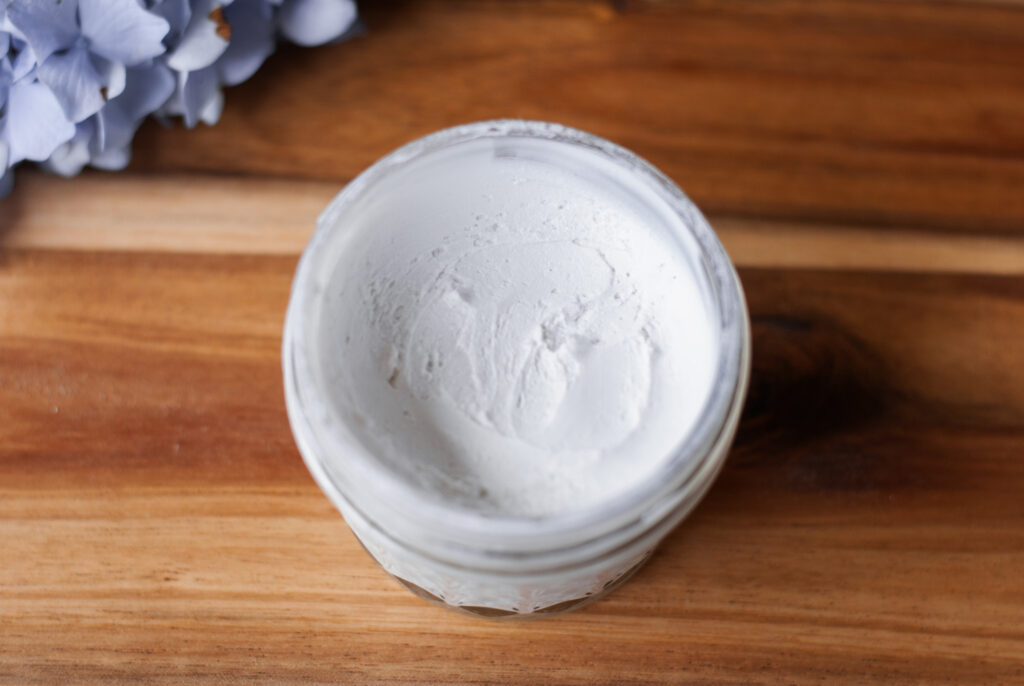
Titanium Dioxide
Titanium dioxide, a common ingredient in conventional sunscreens, helps block the sun’s harmful rays. However, it can also have some harmful effects.
When it’s in the form of tiny particles called nanoparticles, it can penetrate the skin and enter the body. Some studies suggest that these nanoparticles might cause cell damage and inflammation.
There are also concerns about titanium dioxide being inhaled when it’s in spray sunscreens, which could potentially harm the lungs. While it’s effective at protecting against sun damage, the possible risks make some people prefer natural alternatives for their sun protection.
What Does The SPF Rating Mean?
According to the MD Anderson Cancer Center, the SPF rating helps you to know if a product has effective sun protection. It reflects protection from mainly UVB rays. For example, SPF 15 blocks around 93% of UVB rays if it’s applied properly, liberally, and evenly. A SPF 30 sunscreen will block around 97% of UVB.
However, the difference between SPF 30 and SPF 50 is only 1% with a rating of 50 blocking 98% of UVB rays. A higher SPF could give you a false sense of security.
Also, a higher SPF rating means more harmful chemicals without a big difference in protection. Purchasing a sunscreen with a SPF rating of 50 or less is best.
If you’re going to be in the sun for a prolonged period, it’s best to wear protective clothing in addition to other measures of protection.
This tallow sunscreen recipe would have the equivalent of an SPF rating of around 15-20% based on the percentage of zinc added to the recipe which is 22%.
If you’re making a tallow sunscreen recipe you want 20% of the total weight of the lotion to be zinc oxide for an SPF rating of 15-20%.
*** I did not scientifically test this recipe for an SPF rating. This is based on general research on SPF ratings related to zinc oxide amounts***
Natural Ingredients
Making your own sunscreen at home can be easy and fun, using natural ingredients that are good for your skin. Here are some great ingredients you can use:
- Coconut oil: Coconut oil is great for your skin. It’s moisturizing and has a natural SPF of about 4-5. It helps keep your skin soft and smooth.
- Non-nano zinc oxide: This is a key ingredient for sun protection. It sits on top of your skin and reflects the sun’s rays. Non-nano means the particles are too large to be absorbed into your skin, making it safer.
- Grass-fed tallow: Tallow from grass-fed cows is rich in vitamins A, D, and K. It’s super moisturizing and helps protect your skin from sun damage. I’ve also used leaf lard in this recipe and it works great!
- Pure shea butter: Shea butter is another moisturizing ingredient that helps soothe and protect your skin. It also has a natural SPF of about 6. Cocoa butter would also be an alternative.
- Essential oils: Some essential oils can boost the effectiveness of your sunscreen and provide additional benefits. For example, carrot seed oil has a high natural SPF and is packed with antioxidants that help repair and protect your skin.
By mixing these ingredients, you can create a sunscreen that’s not only effective but also free from harmful chemicals. Plus, you’ll know exactly what’s going on with your skin, which can be very reassuring.
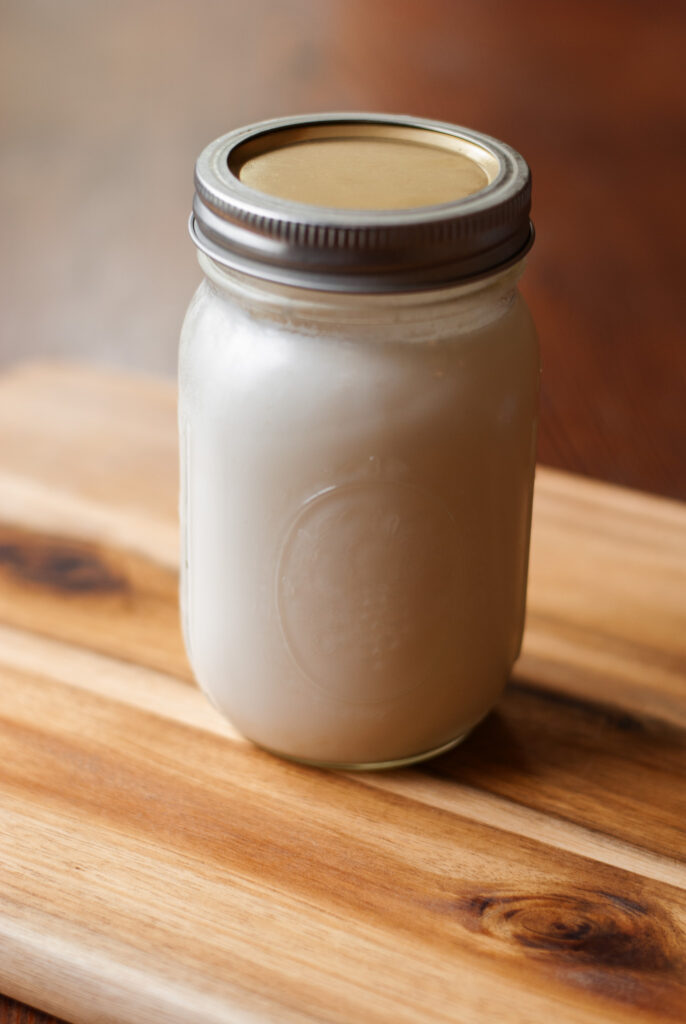
Natural Tallow Sunscreen Recipe
*This post may contain affiliate links which means I make a small commission at no extra cost to you. Read my full disclosure here.*
It’s easy to make your own natural tallow sunscreen with just a few ingredients.
Here’s a simple recipe for making your own sunscreen.
- 1 cup tallow
- 1/2 cup coconut oil
- 1/4 cup shea butter
- 8 tablespoons (½ cup) non-nano zinc oxide- This type of zinc will produce a light film. If you’re comfortable with nano zinc oxide it doesn’t show as much.
- 25 drops essential oil (optional)
Making the sunscreen
- In a double boiler or a heat-safe bowl set over a pot of simmering water, combine the tallow, coconut oil, and shea butter. Stir occasionally until everything is melted and well-mixed.
- Once melted, take the mixture off the heat and let it cool a bit, but not too much. It should still be liquid.
- Mix the liquid in a stand mixer with a whisk attachment until it is whipped and creamy. You can also use a submersion blender.
- Carefully mix in the zinc oxide. Make sure to wear a mask or be very gentle, as zinc oxide powder can be irritating if it’s inhaled. Mix thoroughly until the zinc oxide is evenly distributed.
- If you want a scent, add 25 drops of any essential oil you like.
- Transfer the mixture into a clean, airtight container. You can use a jar or a tin, whatever you have on hand. Let it completely harden and set.
Apply it to your skin before going out in the sun for natural protection. Remember to reapply after swimming or sweating to keep your skin protected.
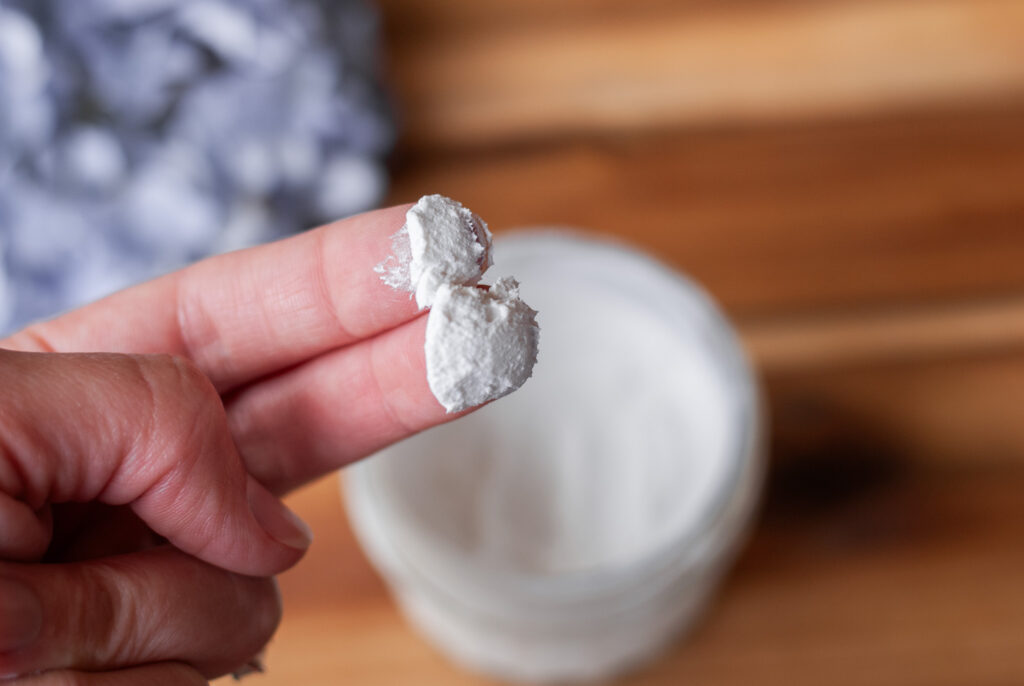
Storing Your Tallow Sunscreen
Storing your homemade tallow sunscreen properly is important to keep it effective and fresh. Here are some tips:
- Use dark amber jars: Store your sunscreen in dark amber jars. These jars help protect the ingredients from light exposure, which can cause the oils and other components to break down and lose their effectiveness.
- Keep it away from direct sunlight: Always store your sunscreen in a cool, dark place, away from direct sunlight. Sun exposure can cause the oils to spoil and the zinc oxide to lose its protective properties.
- Avoid heat: Heat can also cause your sunscreen to melt and separate. Keep it in a cool spot, like a drawer or a cabinet, to maintain its consistency and effectiveness.
- Check for spoilage: Before using your sunscreen, give it a quick check. If it smells off or has changed in texture, it’s best to make a new batch.
Natural Oil SPF Protection
Natural oils can provide some level of SPF protection, though they are not as strong as commercial sunscreens. By adding natural oils to your sunscreen recipe you can increase its effectiveness.
Here are a few commonly used oils and their approximate SPF values:
- Olive Oil: Olive oil has an SPF of about 2-8. It’s rich in antioxidants and helps to moisturize and protect the skin from damage.
- Coconut Oil: Coconut oil offers an SPF of about 4-6. It’s known for its moisturizing properties and ability to soothe and protect the skin.
- Jojoba Oil: Jojoba oil has a very low SPF of around 4. It’s similar to the skin’s natural oils, making it great for moisturizing and providing a slight barrier against the sun.
- Shea Butter: Shea butter has an SPF of about 3-6. It’s deeply moisturizing and contains vitamins A and E, which help protect the skin.
- Cocoa Butter: Cocoa butter has an SPF of about 4-6. It’s excellent for moisturizing and helps to form a protective barrier on the skin.
The Sun Isn’t Bad
Sun is essential for vitamin D production. In fact, some research suggests that a moderate amount of sun exposure reduces the risk of colorectal, breast, and prostate cancers.
I allow 30-45 minutes of sun exposure before applying a sunscreen. It’s not the sun that’s bad, it’s just prolonged exposure that can cause damage.
Why Is Grass Fed Tallow Good For The Skin?
Beef tallow is amazing for your skin! It’s packed with vitamins like A, D, and E, which help keep your skin healthy and glowing.
Tallow is super moisturizing, so it makes your skin feel soft and smooth. It’s also great for repairing dry or damaged skin because it has nutrients that are similar to the natural oils in your skin.
Plus, tallow is all-natural, so you don’t have to worry about any harsh chemicals. Try this natural lotion made with tallow!
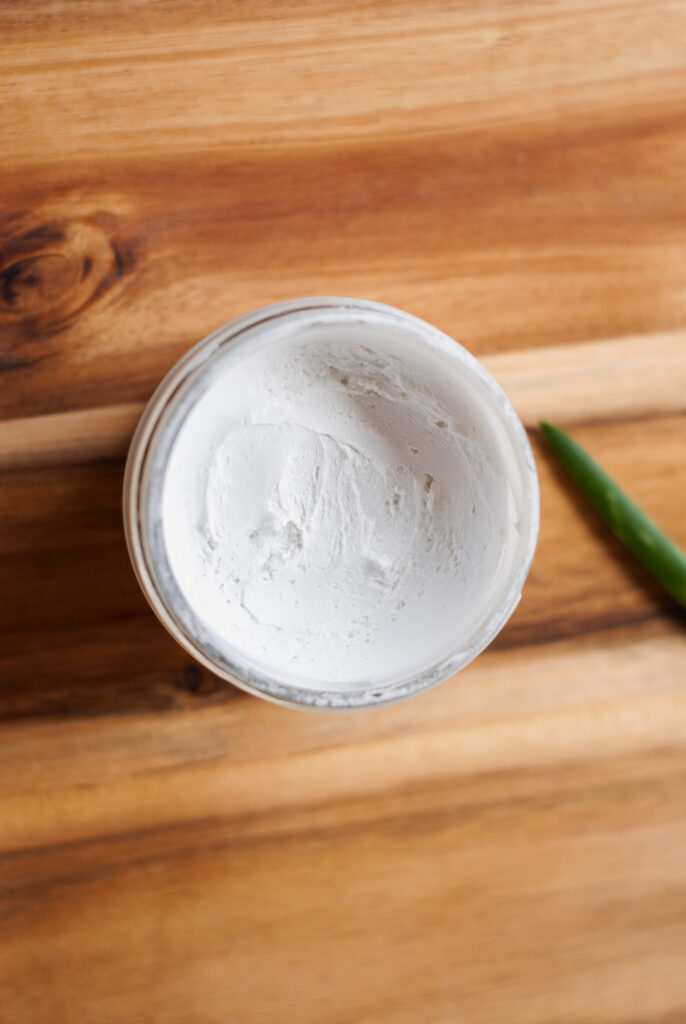
Natural Tallow Sunscreen FAQs
What is tallow sunscreen?
Tallow sunscreen is a natural sun protection product made from beef tallow, which is rendered beef fat, combined with other ingredients like coconut oil, shea butter, and zinc oxide to protect your skin from the sun.
What are the benefits of using tallow in sunscreen?
Tallow is highly moisturizing and nourishing for the skin. It contains vitamins A, D, and E, which help keep the skin healthy. Tallow also closely mimics the natural oils in our skin, making it a great base for sunscreen.
Is Tallow sunscreen safe for sensitive skin?
Yes, tallow sunscreen is generally safe for sensitive skin because it uses natural ingredients. However, it’s always a good idea to do a patch test first to ensure you don’t have any reactions.
What is non-nano zinc oxide and why is it used in tallow sunscreen?
Non-nano zinc oxide is a mineral that sits on top of the skin and reflects the sun’s rays, providing sun protection. It’s used in a tallow sunscreen recipe because it doesn’t get absorbed into the skin, making it safer and effective for blocking UV rays.
How long does homemade tallow sunscreen last?
Homemade tallow sunscreen can last several months if stored properly in a cool, dark place. Always check for any changes in smell or texture before use.
What SPF does tallow sunscreen provide?
The SPF of homemade tallow sunscreen can vary based on the amount of zinc oxide used. Typically, it can provide a range of SPF 20-30, but it’s best to do your own research and testing to determine the exact SPF.
Can I use tallow sunscreen on my face?
Yes, tallow sunscreen can be used on your face. It’s gentle and moisturizing, making it also suitable for facial skin.
I’m very sensitive to sunscreen on my face and I wear this cream under my makeup daily.
Tallow Sunscreen Recipe-Final Thoughts
Making your own tallow sunscreen recipe not only protects your skin from the sun’s harmful rays but also nourishes it with natural ingredients like beef tallow, coconut oil, and shea butter.
Unlike conventional sunscreens that can contain chemicals and synthetic fragrances, tallow sunscreen is gentle and safe for sensitive skin.
By using homemade alternatives, you avoid potential risks associated with commercial products, such as skin irritation and environmental harm.
Remember, not wearing sunscreen can lead to sunburn, premature aging, and even skin cancers over time. Taking care of your skin with natural, effective solutions like tallow sunscreen ensures you enjoy the sun safely while keeping your skin healthy and radiant.
If you enjoyed this sunscreen recipe, please share it! Thanks for visiting my farm.
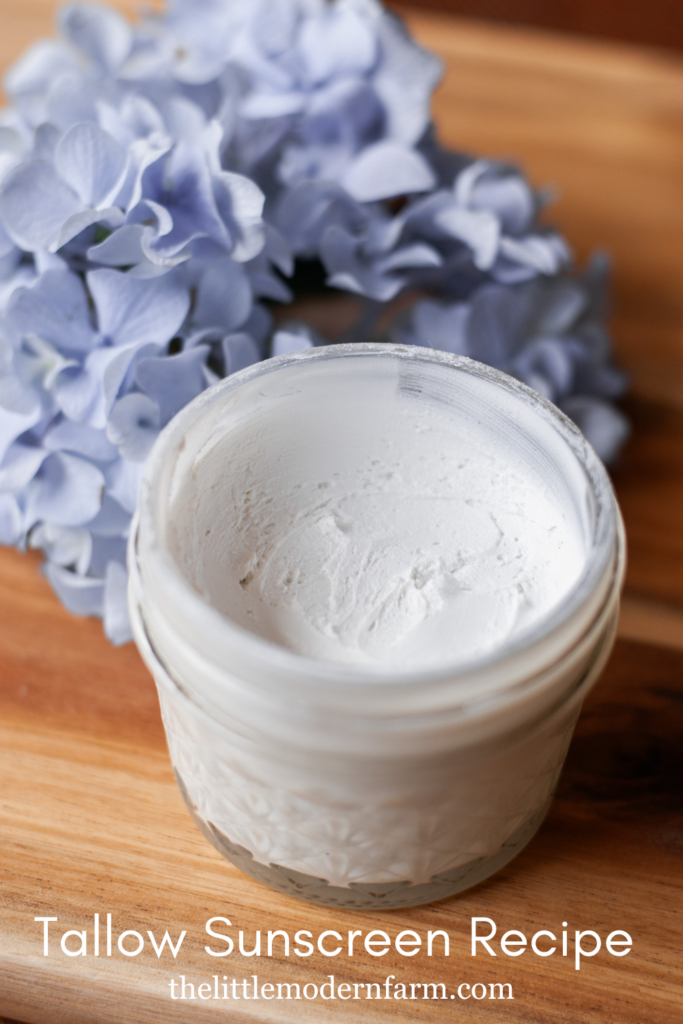
More From The Farm
The BEST Natural Lotion Recipe
Tallow is rendered beef fat. It can be easily absorbed by your skin since it is made up of similar elements. Artificial moisturizers aggravate the skin causing irritation and over-drying.
Tallow naturally adds moisture to your skin and helps heal any previous skin issues. It also has a lot of fat-soluble vitamins that make it easily absorbed into your skin…
Tallow Sunscreen Recipe
Equipment
- Stand Mixer
- Double boiler
Ingredients
- 1 cup Grass Fed Beef Tallow
- 1/2 cup Coconut oil
- 1/4 cup Shea butter
- 8 tbsp Non-nano zinc oxide Or 1/2 cup
- 25 drops Essential oil optional
Instructions
- In a double boiler or a heat-safe bowl set over a pot of simmering water, combine the tallow, coconut oil, and shea butter. Stir occasionally until everything is melted and well-mixed.
- Once melted, take the mixture off the heat and let it cool a bit, but not too much. It should still be liquid.
- Mix the liquid in a stand mixer with a whisk attachment until it is whipped and creamy. This can take up to 10 minutes. You can also use a submersion blender.
- Carefully mix in the zinc oxide. Make sure to wear a mask or be very gentle, as zinc oxide powder can be irritating if inhaled. Mix thoroughly until the zinc oxide is evenly distributed.
- If you want a scent, add 25 drops of any essential oil you like.
- Transfer the mixture into a clean, airtight container. You can use a jar or a tin, whatever you have on hand. Let it completely harden and set.
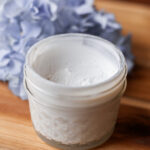
[…] Natural Tallow Sunscreen […]